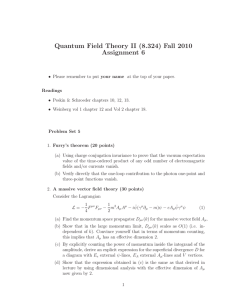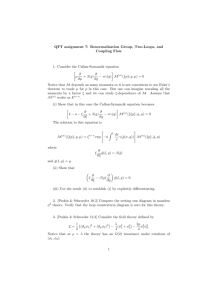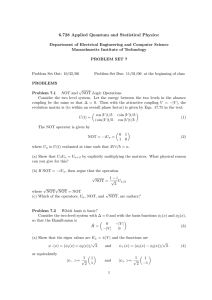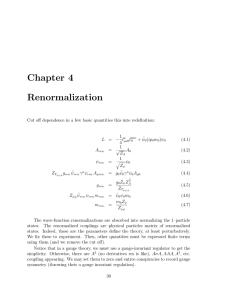Document 13470508
advertisement
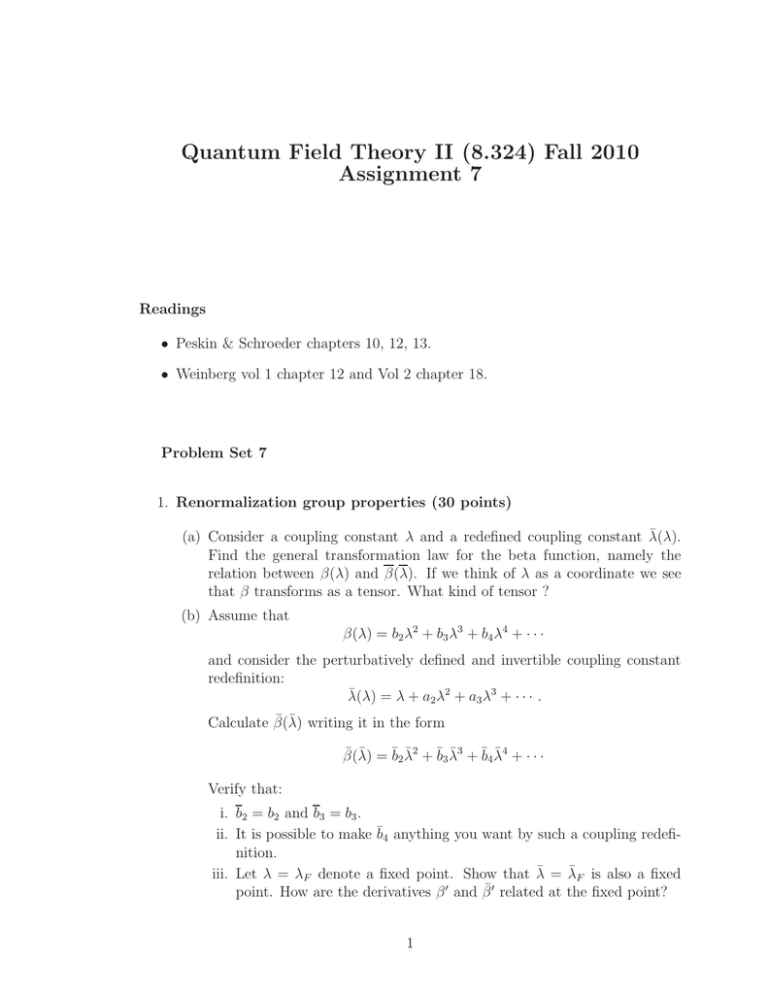
Quantum Field Theory II (8.324) Fall 2010 Assignment 7 Readings • Peskin & Schroeder chapters 10, 12, 13. • Weinberg vol 1 chapter 12 and Vol 2 chapter 18. Problem Set 7 1. Renormalization group properties (30 points) (a) Consider a coupling constant λ and a redefined coupling constant λ̄(λ). Find the general transformation law for the beta function, namely the relation between β(λ) and β(λ). If we think of λ as a coordinate we see that β transforms as a tensor. What kind of tensor ? (b) Assume that β(λ) = b2 λ2 + b3 λ3 + b4 λ4 + · · · and consider the perturbatively defined and invertible coupling constant redefinition: λ̄(λ) = λ + a2 λ2 + a3 λ3 + · · · . Calculate β̄(λ̄) writing it in the form β̄(λ̄) = b̄2 λ̄2 + b̄3 λ̄3 + b̄4 λ̄4 + · · · Verify that: i. b2 = b2 and b3 = b3 . ii. It is possible to make ¯ b4 anything you want by such a coupling redefi­ nition. iii. Let λ = λF denote a fixed point. Show that λ̄ = λ̄F is also a fixed point. How are the derivatives β ′ and β̄ ′ related at the fixed point? 1 (c) Consider the differential equation for a massless coupling g µ dg = −bg 2 − cg 3 − dg 4 − · · · dµ (1) with b, c, d numerical constants. Show that one can write a solution to the above equation in the form ln 1 c µ = + 2 ln bg(µ) + O(g(µ)) Λ bg(µ) b (2) where Λ is an integration constant, which can be considered as a dynami­ cally generated scale. Argue that Λ is renormalization group invariant. (d) More generally, show that in a renormalizable theory with a dimensionless coupling constant g(µ) and no other dimensional parameter (like in a nonAbelian gauge theory), dimensional transmutation happens. That is, show that g(µ) can be written in a form � � µ �� g(µ) = f log (3) Λ with Λ a universal scale and f a function depending on the specific theory. (Inverting (2) gives a specific example of f .) 2. Asymptotic freedom in six-dimensional field theory (30 points) Consider the field theory 1 1 g0 L = − (∂φ)2 − m20 φ2 − φ3 2 2 6 (4) Calculate the β-function associated with the coupling g0 . Use dimensional regu­ larization and minimal subtraction. You will find that this is a theory where the coupling constant becomes weaker at higher energies i.e. it is an asymptotically free theory. 3. Asymptotic symmetry (40 points) Peskin & Schroeder prob. 12.3. (In intermediate steps you can use results of section 10.2 of Peskin & Schroeder.) 2 MIT OpenCourseWare http://ocw.mit.edu 8.324 Relativistic Quantum Field Theory II Fall 2010 For information about citing these materials or our Terms of Use, visit: http://ocw.mit.edu/terms.
